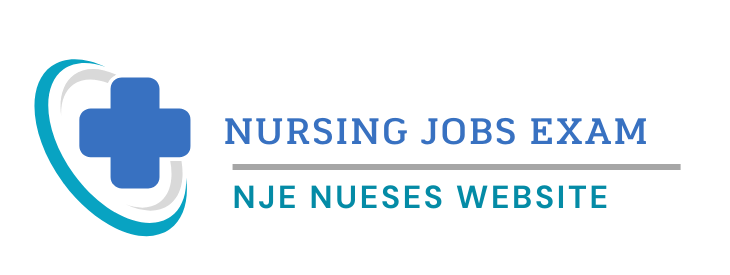Paroxysmal Supraventricular Tachycardia (SVT) is a series of three or more SVPBs which may occur for a few beats or continuously for several hours or days. The last beat of the series is followed by a compensatory pause that is incomplete. Usually, the rhythm is regular and at a rate of 150-250/ min. SVT is a narrow QRS complex tachycardia at rates between 150-250/min with sudden onset and sudden termination.
Mechanisms of Paroxysmal Supraventricular Tachycardia (SVT)
There are 5 different mechanisms.
1. A-V nodal re-entry
2. A-V nodal re-entry using a concealed extranodal pathway
3. S.A. nodal re-entry
4. Intra-atrial re-entry
5. Automatic atrial tachycardia
The first two account for 90% of cases. The P wave occurs simultaneously with QRS and is hence not visible in A-V nodal re-entry. However, in A-V nodal re-entry with a concealed extranodal pathway, the P wave follows QRS complex. In SA nodal re-entry and intra-atrial re-entry, the P wave precedes QRS complex. In the former, its morphology is same as sinus P wave, whereas in the latter it is different. In automatic atrial tachycardia, there is a characteristic warm up phenomenon i.e. there is gradual acceleration at the onset of tachycardia and gradual slowing before termination of the tachycardia. A common example is PAT with block of digoxin toxicity.
Diagnosis of Paroxysmal Supraventricular Tachycardia (SVT)
SVT is continuous run of SVPBs so that each P’ wave is followed by a QRS complex.
The spread of the impulse through the atrial muscle occurs more slowly than a normal sinus beat or SVPB. Hence, the P-R interval is prolonged and the P’ wave may be obscured by the preceding QRS complex simulating junctional tachycardia.
Causes of Paroxysmal Supraventricular Tachycardia (SVT)
1. Idiopathic.
2. Heart diseases: Coronary, rheumatic, thyrotoxicosis, diphtheria, hypertension.
3. Excessive use of tea, coffee, tobacco and alcohol Drugs:
4. Digitalis, amphetamine, adrenaline, thyroxine and emetine.
5. Hypoxia/ Anoxemia: Anemia, shock.
6. Reflex: Peptic ulcer, kidney and gallstones.
7. Manipulation of intrathoracic organs during surgery on the heart or thoracic organs.
Significance: SVT may last for a few seconds to several days. It is usually benign and if without an underlying cause does not reduce life expectancy. Persistence of SVT in a patient with organic heart disease may lead to cardiac failure and coronary insufficiency. Persistence for a very long period, even in a normal individual, may cause cardiac failure.
Treatment Principle of Paroxysmal Supraventricular Tachycardia (SVT)
1. A-V nodal re-entry, A-V nodal re-entry using a concealed bypass tract or S-A re-entry usually responds to mechanical measures to increase vagal tone and drugs that slow ventricular rate like verapamil, propranolol and digoxin.
2. Intra-atrial re-entry and automatic atrial tachycardia are not usually terminated by the above measures. The treatment of choice is control of ventricular rate by verapamil, propranolol or digoxin followed by either quinidine or procainamide.
3. In PAT with block, digitalis must be withdrawn.
Treatment of Paroxysmal Supraventricular Tachycardia (SVT)
1. Mechanical measures to increase the vagal tone:
a) Carotid sinus massage, first on the right side and then on the left side, for 3-5 seconds at a time, may stimulate the vagus nerve and abolish the tachycardia.
b) Self-induced gagging
c) Valsalva manoeuvre or Muller manoeuvre terminates this tachycardia by stimulating the vagus nerve, slowing conduction and prolonging refractory period of A-V node.
d) The’ duck-diving reflex’: Ice water splashed on the face or ice cubes in polythene bags placed on the face.
2. Drugs: If mechanical measures fail, the following drugs may be useful:
a) Verapamil 5 cc intravenously slowly often dramatically abolished SVT. Once sinus rhythm is established oral verapamil 40-120 mg three times a day may be given to maintain the sinus rhythm.
b) Adenosine purine nucleoside IV 3 mg with saline.
c) Esmolol, an ultrashort acting beta-blocker.
d) Digitalis, quinidine, propranolol, diphenylhydantoin sodium and potassium salts as mentioned for SVPB are also useful.
Amiodarone or Disopyramide orally have recently been found useful.
3. D.C. Shock: If mechanical methods and drugs fail or if the patient is hemodynamically unstable, cardioversion is achieved by selectively. synchronized direct current countershock. Energies of 100-500 J. are usually successful.





